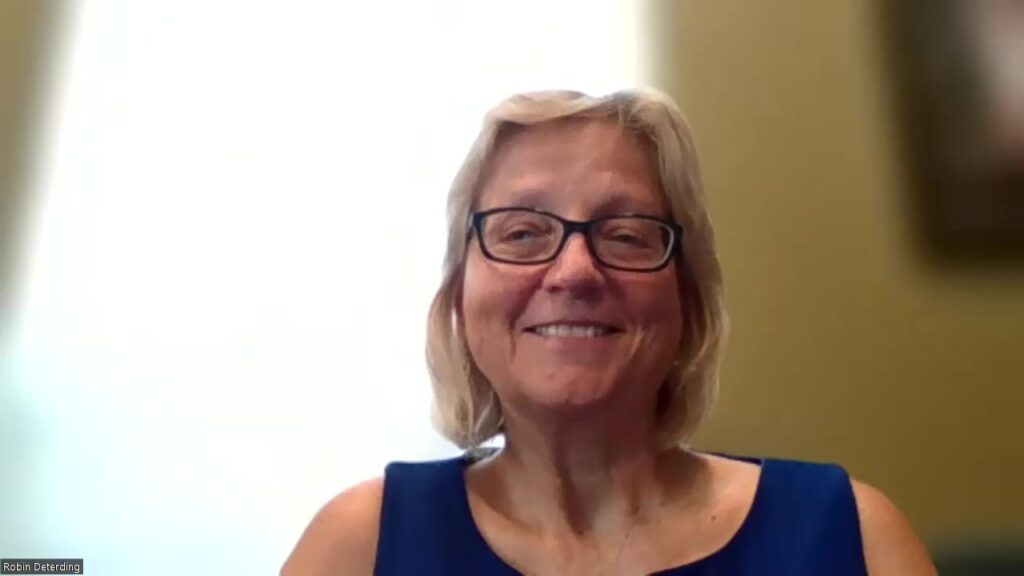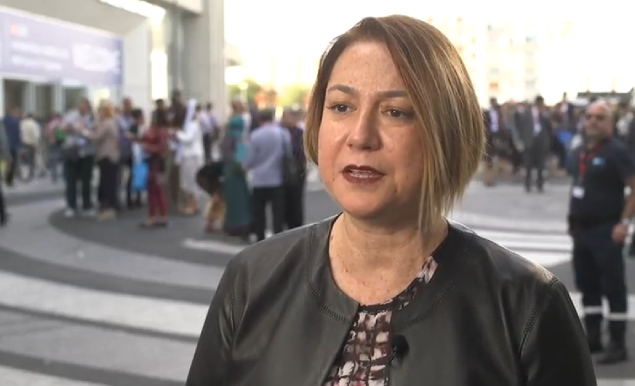Dupilumab is indicated as an add-on maintenance treatment in children aged 6 years and older with asthma, and demonstrated clinical efficacy in the pivotal VOYAGE study (NCT0294895). We caught up with Dr Theresa W Guilbert (Cincinnati Children’s Hospital & Medical Center; University of Cincinnati, Cincinnati, OH, USA) to discuss the main findings from a post-hoc analysis of the VOYAGE study, which studied the impact of exacerbation history on dupilumab efficacy in children with asthma.
The abstract ‘Impact Of Exacerbation History On Dupilumab Efficacy In Children With Asthma In The VOYAGE Study‘ (Abstract number: 058) was presented at AAAAI 2023, February 24–27, 2022, #AAAAI2023.
Questions
- What did the VOYAGE study teach us about the efficacy and safety of dupilumab in the treatment of asthma in children? (0:19)
- What were the aims, methodology and inclusion criteria of this post-hoc analysis? (0:49)
- What were the main findings of this post-hoc analysis? (2:17)
- How will these insights optimize the use of dupilumab in clinical practice? (3:11)
Disclosures: Theresa W Guilbert discloses the following: consultant for AiCME, Best Pharmaceuticals for Children Act (BPCA); grant/research support from Sanofi/Regeneron/Amgen, AstraZeneca, OM Pharma; advisory board for Sanofi, Regeneron, Amgen, AstraZeneca, Genentech, Polarean, OM Pharma.
Support: Interview and filming supported by Touch Medical Media Ltd. Interview conducted by Atiya Henry.
Filmed in coverage of the American Academy of Allergy Asthma & Immunology Annual Meeting 2023.
Transcript:
Hi, my name is Dr Theresa Guilbert. I’m a professor of Pediatrics at the University of Cincinnati and at the Cincinnati Children’s Hospital and Medical Center in Cincinnati, Ohio.
What did the VOYAGE study teach us about the efficacy and safety of dupilumab in the treatment of asthma in children? (0:19)
In the original VOYAGE study that compared the effect of dupilumab to placebo treated children, we saw that children treated with dupilumab had increased symptom improvement, reduced exacerbations and an overall acceptable safety profile compared to children that were treated with placebo.
What were the aims, methodology and inclusion criteria of this post-hoc analysis? (0:49)
This was a post hoc analysis of the original VOYAGE or the pivotal VOYAGE study. So it was children aged 6 to 11 years that had uncontrolled moderate to severe persistent asthma, and they were treated with either add on dupilumab at 100 to 200 milligrams every two weeks according to their body weight or received matched placebo for a total of 52 weeks. This abstract presentation is looking at post-hoc data from patients that had evidence of type 2 inflammatory asthma at parent study. This was defined as children with blood eosinophils of 150 cells per microliter or greater or equal to or greater to 20 parts per billion of exhaled nitric oxide. Those results were stratified by the number of exacerbations in the year prior to starting VOYAGE: one, two or three exacerbations at baseline in that year prior to starting VOYAGE. We also looked at annualized severe exacerbation rates, percent predicted force expiratory volume in one second or FEV1 at weeks 2, 12 and 52 weeks.
What were the main findings of this post-hoc analysis? (2:17)
The main findings were that dupilumab significantly reduced annualized exacerbation rates during the voyage 52 week study in type 2 population, regardless of the child’s prior exacerbation history. Furthermore, dupilumab improved the percent predicted FEV1 over time, regardless of the child’s prior exacerbation history, and they were statistically significant for all those subgroups, so whether the child had one, two or three exacerbation rates at week 52, and for the subgroups of patients with one prior exacerbations at week 2 and 12 as well. There were some numerical improvements that we saw for the other subgroups at week 2 and 12.
How will these insights optimize the use of dupilumab in clinical practice? (3:11)
In general, for patients with type 2 asthma and a prior exacerbation history dupilumab reduced the exacerbation rates and improved percent predicted FEV1 at 52 weeks, regardless of the number of prior exacerbations the child had. Whether they had one or they had three, it still worked pretty well. Lung function results at weeks 2 and 12 followed a similar trend, but weren’t statistically significant, most likely due to sample size.
Subtitles and transcript are autogenerated










